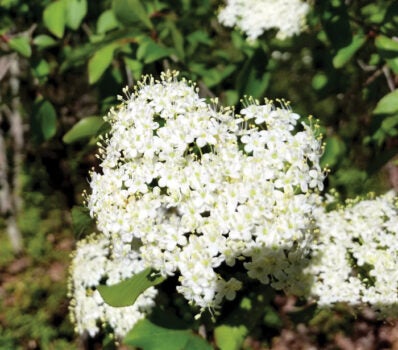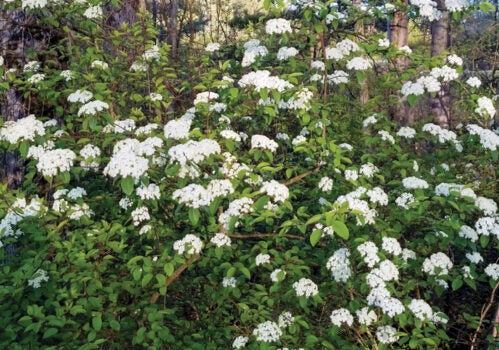Darrell Blackwelder: Q&A: Foliage and fertilizing
Published 12:00 am Saturday, April 6, 2024
Our weather has been about what you can expect during the month of April — cool one week, exceptionally warm a few days later. Remember that with the unusually warm weather experienced a few days ago, the last frost-free date is April 15. Keep this in mind when planting sensitive vegetable and bedding plants. Below are a few gardening questions that may be of interest to home gardeners.
Question: There are small trees with white blooms dotting the woods and outlying wooded areas in Rowan County near the lake that look like hydrangea trees. What is this tree?
Answer: The small tree with the showy blooms is a blackhaw viburnum (Viburnum prunifolium). These are small, deciduous trees with snowy, white flowers are now in full bloom and readily found on the edge of woodlands or fields. The shrub often evolves into a small tree reaching a height of 15 feet. This endogenous shrub or small tree is in the honeysuckle family. As the showy flowers fade away, the tree forms small, shiny leaves, inconspicuously fading into wooded areas producing small, black fruit. The fruit ripens in the fall, a ready source of food for songbirds, squirrels and chipmunks; however, the tree and fruit are deer resistant. Go to https://plants.ces.ncsu.edu/plants/all/viburnum-prunifolium/ for more detailed information.
Question: When is the best time to mow my daffodil foliage? They have bloomed out and starting to look bad.
Answer: Leave the foliage intact as long as possible. The foliage eventually turns brown and then it can be removed without damage to the bulbs. It is important to leave the foliage as long as possible as it provides a source of food to produce next year’s flower.
Question: Is now a good time to fertilize my shrubs? I know that lawns are fertilized in the spring, but when do you fertilize trees and shrubs?
Answer: Yes, now is a good time to fertilize your shrubs. Spring is the best time to fertilize because it avoids leaching during the winter. Avoid fertilization in late summer (August) since it may stimulate late-season growth that fails to harden off before frost. Slow release fertilizers are becoming very popular because it allows constant release of nutrients slowly all summer for constant feeding. Go to http://content.ces.ncsu.edu/a-gardeners-guide-to-fertilizing-trees-and-shrubs.pdf for detailed information on fertilizing trees and shrubs in the landscape.
Darrell Blackwelder is the retired horticulture agent and director with the North Carolina Cooperative Extension Service in Rowan County. Contact him at deblackw@ncsu.edu.




